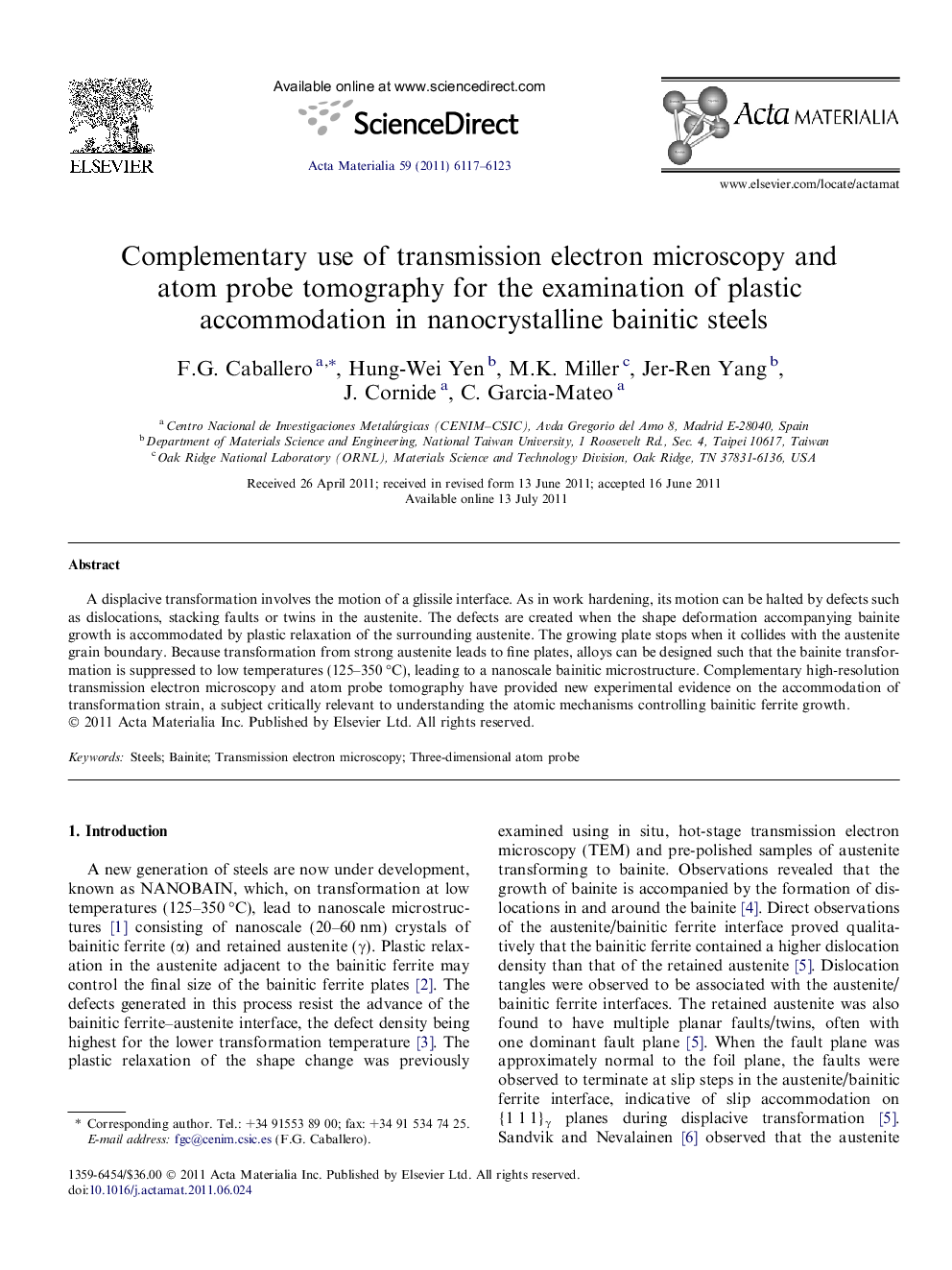| Article ID | Journal | Published Year | Pages | File Type |
|---|---|---|---|---|
| 1447480 | Acta Materialia | 2011 | 7 Pages |
A displacive transformation involves the motion of a glissile interface. As in work hardening, its motion can be halted by defects such as dislocations, stacking faults or twins in the austenite. The defects are created when the shape deformation accompanying bainite growth is accommodated by plastic relaxation of the surrounding austenite. The growing plate stops when it collides with the austenite grain boundary. Because transformation from strong austenite leads to fine plates, alloys can be designed such that the bainite transformation is suppressed to low temperatures (125–350 °C), leading to a nanoscale bainitic microstructure. Complementary high-resolution transmission electron microscopy and atom probe tomography have provided new experimental evidence on the accommodation of transformation strain, a subject critically relevant to understanding the atomic mechanisms controlling bainitic ferrite growth.
